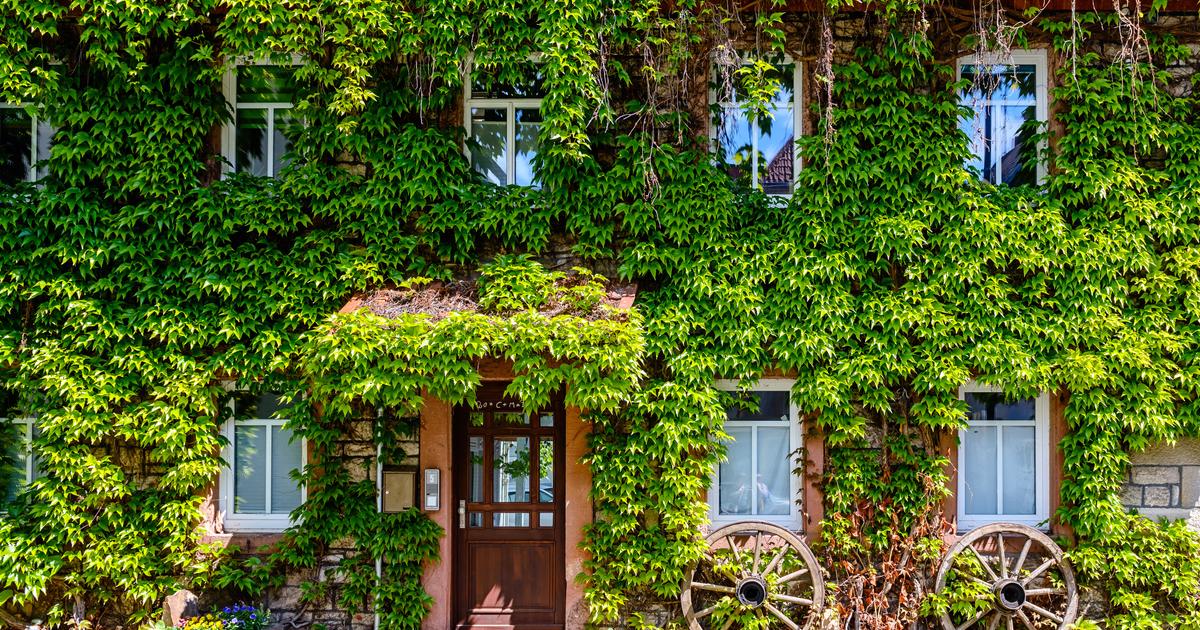Ivy, often loved for its attractive green color, can quickly become invasive and cause damage to walls and roofs.
To discover
February: what vegetables and fruits are in season?
Ivy, an invasive plant?
Indeed, ivy (Hedera Helix) can be considered an invasive plant.
Although it has many advantages, such as insulation, protection of facades and preservation of biodiversity, ivy can cause problems.
Its rapid growth, which can reach up to fifty centimeters per year, and its ability to climb up to fifteen meters high make it a plant that can quickly become invasive.
It can actually be difficult to get rid of once it has grown on a wall.
Additionally, without proper management, ivy can spread quickly and damage masonry, gutters and tiles.
Should you keep or remove ivy?
In the garden, ivy contributes to biodiversity by providing shelter and food to many insects and birds.
What about on the walls of houses?
On the one hand, its advantages in terms of insulation, protection of facades and habitat for wildlife are praised.
On the other hand, its disadvantages, such as potential structural damage and invasiveness, should not be ignored.
The benefits of ivy
Ivy has several significant benefits when left to grow on the walls of our homes:
- It acts as a natural insulator and helps regulate temperature inside buildings by providing shade in summer and retaining heat in winter
- Climbing ivy is capable of absorbing a notable quantity of atmospheric pollutants.
It helps improve air quality, particularly in cities.
- Its crampons absorb humidity: ivy can therefore have a beneficial effect on damp walls.
- Its decorative dark green deciduous foliage beautifies facades all year round
- As an ornamental plant, it can camouflage unattractive structures.
- In addition, ivy is a robust climbing plant that requires little maintenance once established.
It is drought resistant and thrives in all weather conditions.
The disadvantages of ivy
However, ivy can also have significant disadvantages if not contained:
- It can cause structural damage by lifting tiles or seeping into masonry, particularly if your wall has cracks.
- It is a vigorous plant that can block gutters.
- It damages paint and leaves marks on brick, stone or wooden walls.
- Its leaves and fruits are toxic.
- The foliage of ivy is a real nest for insects at the beginning of spring: spiders, bees, flies and midges, butterflies, beetles, etc.
It can even accommodate wasp nests.
How to get rid of it?
To get rid of ivy naturally, several methods can be used.
Remember to put on gloves before starting: ivy is a nest for insects and you could be stung or scratched.
The first method consists of cutting the sections of ivy with pruning shears and putting salt on the part that is in contact with the ground.
The upper part of the ivy will dry out and you can then easily remove it.
You can also cut the ivy vines and remove them manually.
To make this operation easier, water the vines with a garden hose beforehand, to soften the cramped roots.
Next, cut the main vine at the base and detach the secondary stems by gently pulling.
Also remove underground roots to prevent ivy from growing back by digging with a shovel.
Natural weed killers such as white vinegar or salt are also an option.
However, these methods can have disadvantages: soil acidification, groundwater pollution, etc.
Use them carefully and sparingly.
Ivy is a very resistant plant which offers physical protection against humidity and appreciable thermal insulation to the walls of houses in good condition.
However, as soon as its growth becomes excessive, measures must be taken to stop it.
Regular maintenance and proper pruning, preferably in fall, are necessary to keep it under control.

